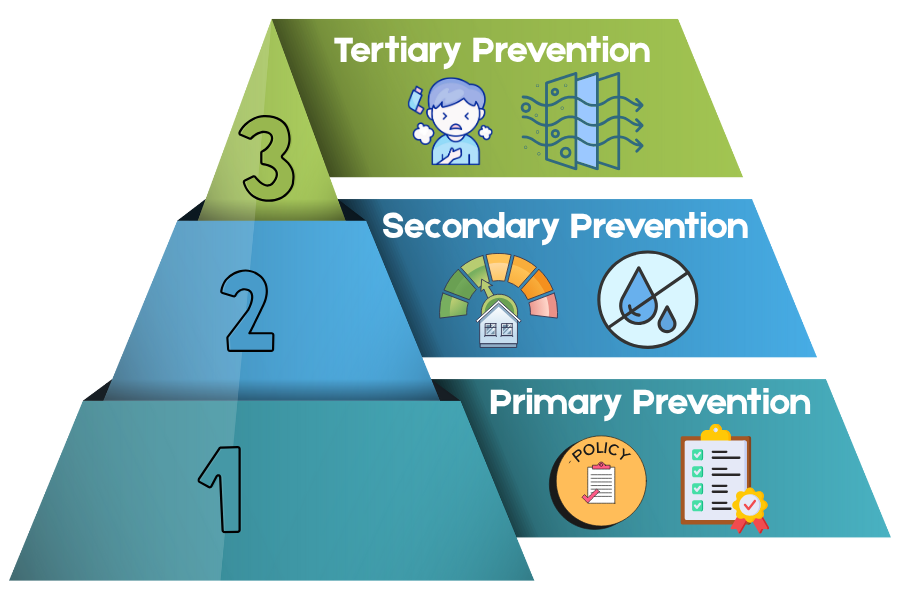Jul 5, 2023
15 Takeaways Covering the Latest in Inflation Reduction Act Rebate Rollouts
Still have burning questions about forthcoming Inflation Reduction Act rebates? We do, too! Energy Circle hosted Kara Saul Rinaldi—BPA’s VP of Government Affairs, Policy, and Programs—on a webinar to discuss the most current developments on these incentive programs and what we can expect as we await guidance from the DOE.
By: Cory Allyn

The entire webinar is worth a watch, but if you’ve only got a few minutes, here are our top takeaways:
1. Understanding the Difference Between the Two IRA Rebate Programs
Remember, the IRA created two separate new rebate programs: HOMES (rebates are calculated based on energy savings) and HEERHA (rebates are calculated per individual measure). Both of these rebate programs will be run by individual state energy offices.
2. When Will DOE Guidelines on IRA Rebate Programs Be Released?
The Department of Energy is currently expected to provide guidelines to states on July 10 or 11, 2023.
3. What Will Be in These DOE Guidelines?
Guidelines are expected to be as close to statute (i.e. what’s already written in the Inflation Reduction Act law) as possible. There will be additional support for states involving best practices and pathways to consider as each state plans out how it will implement these programs.
4. What Happens After DOE Guidelines are Released?
These guidelines will open the door for states to submit their rebate program plans.
5. When Will IRA Rebates Actually Be Available to Customers?
The DOE will still need to approve state plans before money can start hitting the streets. When rebates will be available in your individual state is still unknown—best estimates have been that some states may be able to start issuing rebates by the end of 2023 or early 2024, and other states will follow throughout 2024.
6. Administrative Funding to Run State Rebate Programs
Up to 20% of each state’s allocated IRA rebate money can be used for administrative funds (like hiring staff to support the programs). That funding is available now and some states have already applied for it.
7. Is There a Deadline for States to Apply for IRA Rebate Funding?
States have until August 2024 to submit their IRA rebate plans to the DOE, or two years after the IRA was signed into law. After that deadline has passed, DOE may reallocate funding from states that missed the deadline to other states that have approved programs.
8. Will Every State Apply for IRA Rebate Funding?
Some governors have grumbled about taking IRA money, but no state has outright said it will refuse it. As of now, we remain hopeful that every state will have its own rebate program.
9. How Important Will It Be for States to Make Rebates Available Immediately?
This is a 9-year program, and states should focus on building a high-quality program designed to run successfully and smoothly for the long haul, not just race to get rebates out the door ASAP.
10. Third-Party Certification and Access to Utility Data
The HOMES rebate program in particular has the potential to be market transformational—it requires access to utility data for measured-based rebates, and it requires certification by a third party for any rebate-qualifying work done—measured or modeled—that details what effect the work will have on home energy use.
11. HOMES Rebates: Modeled vs. Measured
There are two ways to qualify for HOMES rebates: 1) by estimating (modeling) the projected energy savings of home upgrades; or 2) by measuring the actual energy savings after upgrades are made. Each approach comes with its own set of rules and rebate guidelines, and it’s all still very much up in the air, at least until DOE guidelines are released. It’s even possible that some states may only allow for one of the two approaches for their individual rebate programs.
12. Income Verification for Rebate Programs
HOMES rebates are available for all income levels, but the rebates essentially double for low-to-moderate income households that make less than 80% of the area median income (AMI). HEERHA electrification rebates are exclusively for low-to-moderate income households, but the cutoff is higher: 150% of AMI, which in some states can exceed $200,000 a year. The DOE says 150% AMI would mean roughly 70% of the country could qualify.
In both instances, states will need to plan out how they will handle income verification for rebates.
13. Modeling Software for HOMES Rebates
The IRA uses BPI-2400 as a standard for qualifying for HOMES rebates using the modeled (projected) energy savings approach. BPI has already announced that it will be updating the BPI-2400 standard this year “to ensure that it meets industry needs related to the IRA.”
14. Who Is an “Aggregator”?
Aggregators will likely play significant roles for any HOMES rebates that qualify via the measured energy savings approach. An official definition for what an aggregator is in this context (and who could possibly fill that role) is not in the IRA, but is expected to be released in DOE guidelines. It’s possible that aggregators could be utility companies, quasi-state agencies like Efficiency Maine, or private companies, like Sealed.
15. Combining Incentives
The rules around “braiding” (or stacking/combining) multiple incentives are also still up in the air—for example, how the 25C tax credit will interact with HOMES or HEERHA rebates. Expect some of these questions to be answered in DOE guidelines and others to be determined by individual states.





